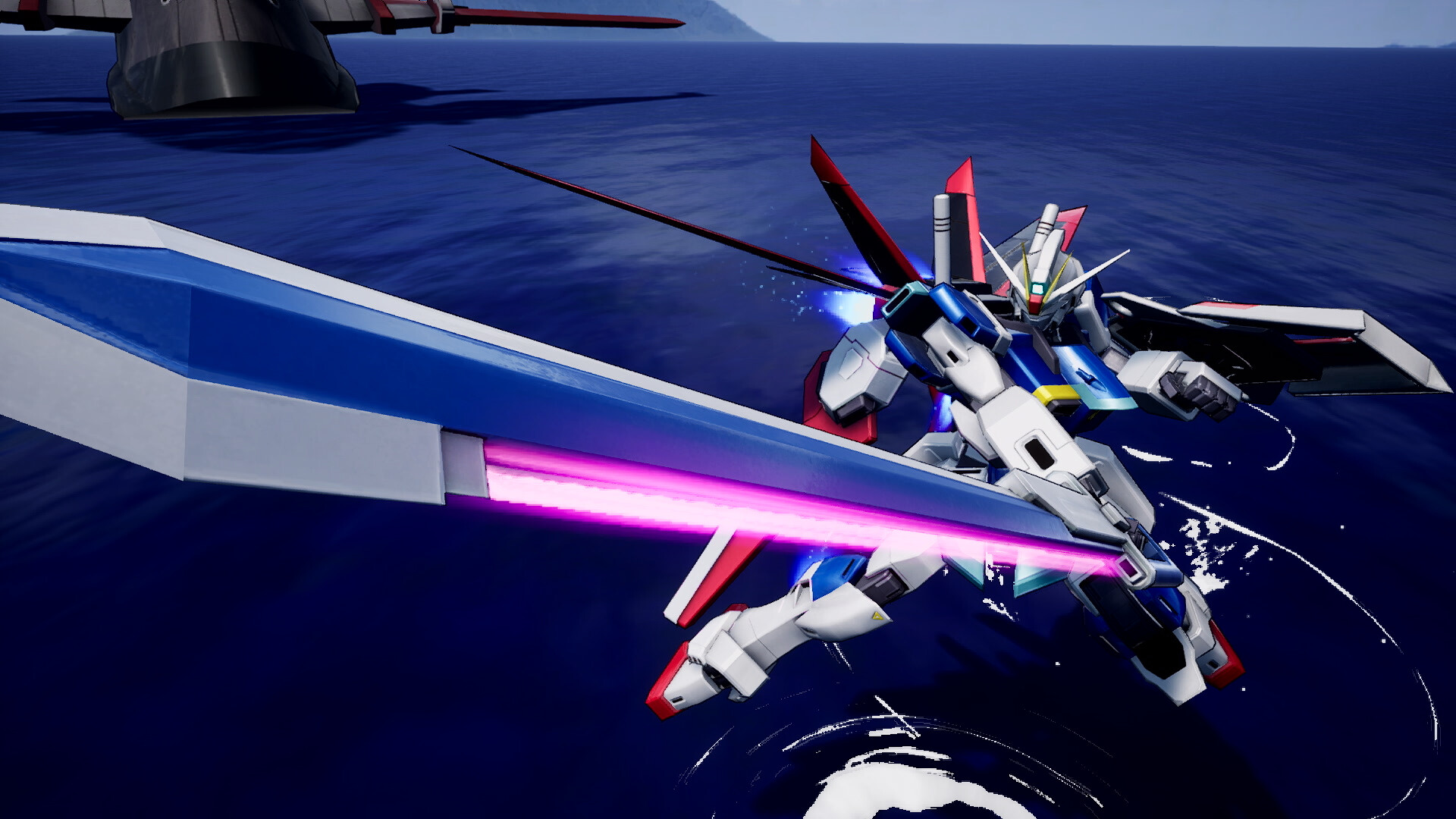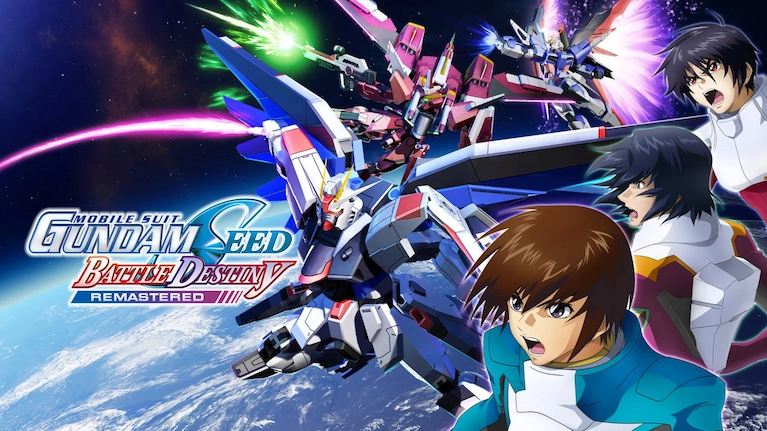Mobile Suit Gundam SEED Battle Destiny Remastered is the latest video game release from the long-running Gundam franchise, bringing an updated version of the 2012 PS Vita title to modern audiences. For the first time, fans outside of Japan can officially experience this installment, as the original game never received an international release.
The remaster aims to appeal to both longtime Gundam enthusiasts and newcomers with its massive mechs, cosmic battles, and faction-based missions. But does it succeed in balancing nostalgia and accessibility, or is it purely fan service for series veterans?
A Complex Universe with Minimal Context
The Gundam universe, first introduced in 1979 with the original Mobile Suit Gundam anime, is one of Japan’s most iconic sci-fi franchises—especially in the mecha genre. The world of SEED is set in a future where humanity has expanded into space colonies, leading to ongoing conflict between Earth and its off-world inhabitants.
This game specifically draws from Gundam SEED (2002) and its sequel Gundam SEED Destiny (2004), which explore political and military struggles between:
- Earth Alliance Forces – aiming to control the colonies
- ZAFT – a military force of space colonists fighting for independence
- Archangel – a neutral battleship crew seeking peace amid the chaos
However, despite the deep narrative roots of the anime, this depth is largely missing from the game. The missions recreate key action scenes from the shows, like Kira Yamato’s early battles with the Strike Gundam and Athrun Zala’s moral dilemmas in Destiny, but the emotional and political complexity is stripped away.
Three Factions, One War

Players can choose to fight for ZAFT, Earth Forces, or Archangel, each offering a different perspective and mission set. ZAFT missions often involve defending colonies, while Archangel provides more tactical boss fights and skirmishes.
The remaster adds new side missions focused on supporting characters and lesser-known events—but if you haven’t watched the anime, these scenes will likely feel confusing. Characters like Kira and Athrun appear with no proper introduction, and key relationships are never explained.
For newcomers, it’s like starting a TV show in Season 3, with no flashbacks. Even the added content can’t make up for the missing emotional groundwork.
Recommendation: Watch the Anime First
If you’re new to Gundam, it’s highly recommended to first watch:
- Mobile Suit Gundam SEED (2002) – 50 episodes
- Gundam SEED Destiny (2004) – 50 episodes
If time is short, watching the first 10 episodes of SEED provides a solid foundation. You’ll meet Kira Yamato, a reluctant hero piloting the Strike Gundam, his conflicted friend Athrun Zala, and Murrue Ramius, the level-headed captain of Archangel.
Alternatively, YouTube story summaries or the Gundam Wiki are great resources for understanding the relationships and background. Knowing the dynamic between Kira and Athrun, and Archangel’s role, significantly enhances the game’s narrative context
Gameplay: Fast Action Meets Tactical Depth
At its core, Battle Destiny Remastered is a blend of real-time mech combat and light RPG mechanics. You’ll pilot one of over 100 mobile suits, from iconic models like Strike, Freedom, and Justice, to lesser-known units like Duel and Buster.
Each Gundam has its own strengths:
- Strike balances speed and power—perfect for beginners
- Freedom offers agility and advanced long-range capabilities
- Justice emphasizes aerial movement and multi-angle attacks
Customization & Strategy
One of the game’s best features is its extensive customization system. You can upgrade armor, equip beam sabers, long-range rifles, and missiles, and tweak your energy distribution to optimize performance.
This allows for distinct playstyles—build for fast melee combat or turn your unit into a missile-launching fortress. Combined with varied environments like space stations, forests, and asteroid fields, the gameplay captures the epic scale of Gundam battles.
Remastered Improvements Over PS Vita Version
Compared to the original Vita release, the remaster includes notable improvements:
- Redesigned lock-on system – switch targets more smoothly
- Streamlined menus – faster mission prep and loadouts
- Tighter controls – more responsive movement and combos
These changes make crowded battles with dozens of enemies and allies far easier to manage. Switching between melee and ranged combat is also much more intuitive now.
AI and Energy System Remain Weak Points
However, some weaknesses from the original remain. Ally AI is frustratingly unhelpful—your squadmates often feel like useless tagalongs. This becomes a major issue in missions where you must defend bases or escort ships.
The energy management system, used for dodging and special attacks, can feel overly punishing. It’s not just challenging—it sometimes comes across as outdated, especially when compared to modern mech games like Armored Core VI or Ace Combat 7.
In more difficult missions, this mechanic becomes needlessly frustrating rather than adding genuine depth.
Visuals and Presentation: Mostly Improved
Graphically, the remaster makes clear strides. Mobile suit models are sharp and detailed, with enhanced textures and improved lighting effects. Explosions, beam attacks, and boosters all contribute to a thrilling cosmic atmosphere.
Environments, from cyberpunk colonies to ruined outposts, are colorful and well-crafted—though some textures and animations still reveal the game’s handheld origins, especially in NPC animations.
Sound Design & Voice Acting
The soundtrack is loyal to the anime, with epic orchestral pieces that add weight to every battle. The new English dub is decent, although some lines come off as overly dramatic—especially for players unfamiliar with the context.
Still, for longtime fans, the audio design hits just the right nostalgic notes.
Final Verdict: For Gundam Fans First, Gamers Second
Mobile Suit Gundam SEED Battle Destiny Remastered is a solid remaster that offers fast, fun mech combat with rich customization. Its biggest drawback is its narrative inaccessibility. If you’re not already familiar with SEED’s complex lore, the story can feel disjointed and shallow.
For fans of the anime, it’s a nostalgic love letter. For newcomers, it’s a game that demands homework to fully enjoy. But once you learn the basics and master the controls, what awaits is a satisfying dive into one of anime’s most iconic wars—fought among the stars, one Mobile Suit at a time.
